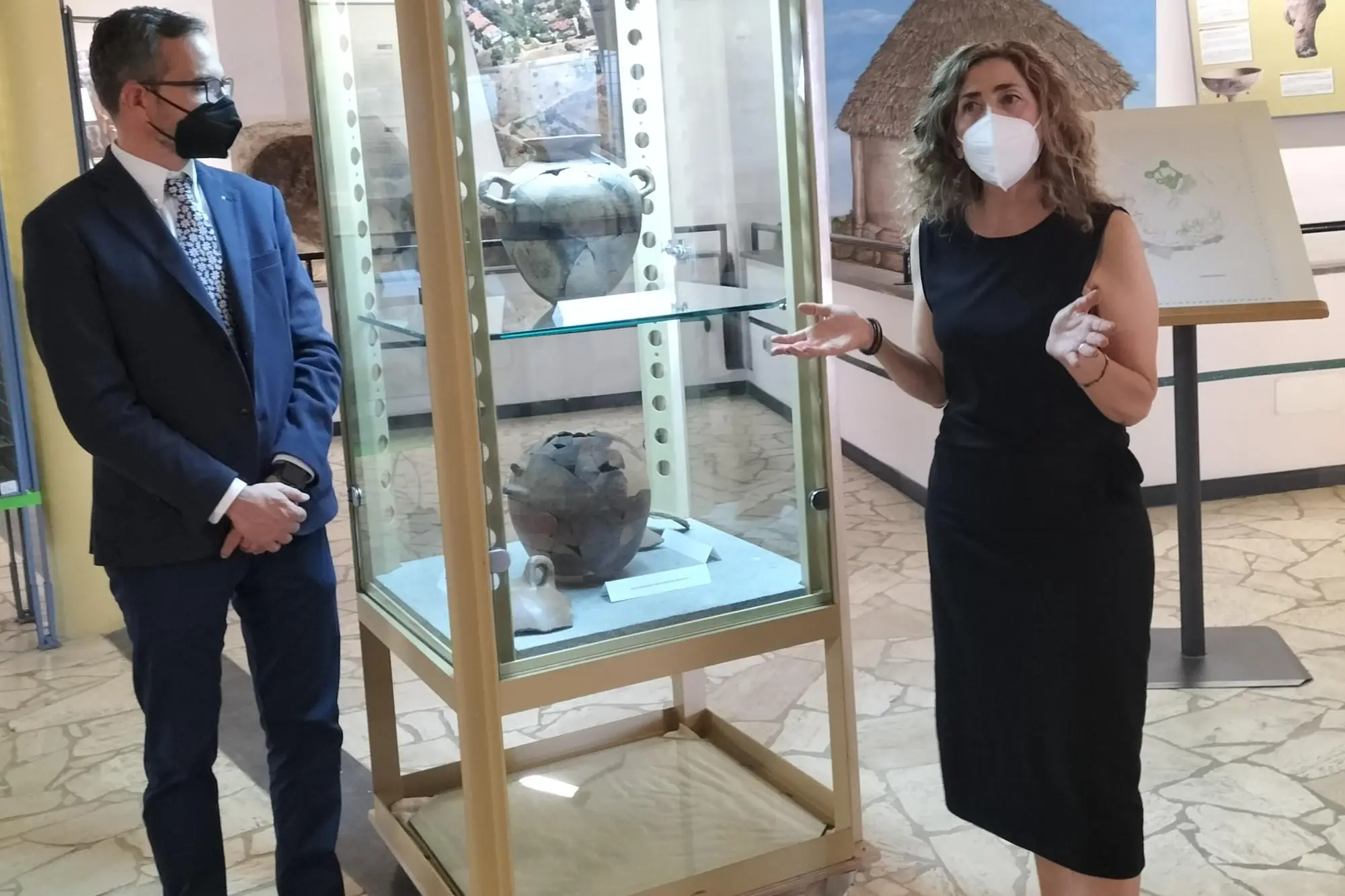Discoveries at the Nuraghe Sirai amphorae of Nuragic-Phoenician features
The four artifacts, two almost perfectly complete, were presented at the Archaeological MuseumPer restare aggiornato entra nel nostro canale Whatsapp
They still retain the charm of the original colors about 2600 years ago, and even the seal that the artist himself wanted to imprint, capable of overcoming the centuries and reaching up to the present day. These are the four wonderful vases, the result of an exceptional discovery in the Sirai nuraghe of Carbonia and testimony for the first time of a unicum of the genus: they are in fact of nuragic origin but with clear references to Phoenician art that had settled nearby perhaps a few decades first.
The four artifacts, two almost perfectly complete, were presented today at the Archaeological Museum of Carbonia for the first of 12 appointments aimed at showcasing finds never exhibited to the public and in this case the result of recent excavations conducted by the team of the archaeologist Carla Perra. in the Sirai nuraghe of Carbonia. "The artifacts - explains the scientist - can be placed between 625 and 580 BC and represent a new typology that never appeared on the surface of any excavation: the amphorae therefore represented unprecedented shapes for the time, and we immediately understood that we were facing to something new ".
The finds come from areas of the nuraghe used as glass and leather workshops, and may have been commissioned by those who wanted an object with nuragic features combined with Phoenician motifs. The event was opened by the mayor Pietro Morittu and the director of the Superintendency Sabrina Cixi and was organized by the Municipality and the Culture System Consortium. The precious and very rare finds will remain open to the public at the museum of villa Sulcis for a month.
